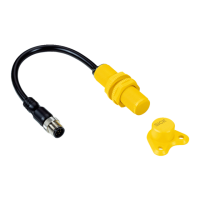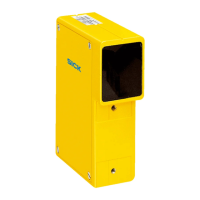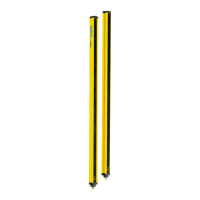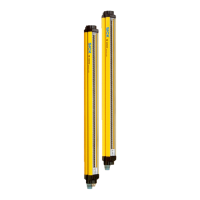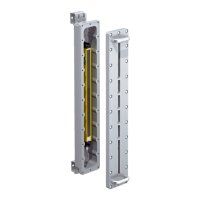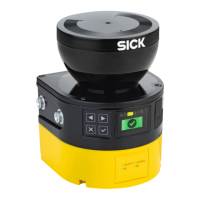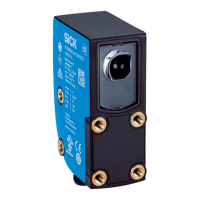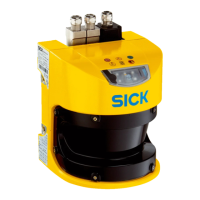Operating Instructions Chapter 6
TR4
8014467/YTD7/2016-03-30 © SICK AG • Industrial Safety Systems • Germany • All rights reserved 81
Subject to change without notice
Commissioning
en
6.2.1 Teaching-in an actuator
Up to eight actuators can be taught-in on the TR4 Unique Coded. The
number of actuators that can still be taught-in is indicated by repeated
flashing of the Status/Diag LED on powering up the device (see Tab. 4).
How to teach-in an actuator:
= Switch on the voltage supply of the sensor.
= Move the actuator inside the response range of the TR4 Unique
Coded. The sensor then automatically starts the teach-in process.
• The actuator must not be removed again from the response range
during the teach-in process. Otherwise the ability of the sensor to
teach-in further actuators will be deactivated.
Teach-in sequence
1. Actuator inside the response range: The Status/Diag LED flashes
∏ Green (1 Hz).
2. Verifying the actuator: The Status/Diag LED flashes for 15 seconds
∏ Green/red (1 Hz).
3. Programming the sensor: The Status/Diag LED flashes for 15 sec-
onds ∏ Green/red (4 Hz).
4. Programming complete: The Status/Diag LED flashes ∏ Green
(1 Hz) and indicates during this process the remaining number of
possible teach-in processes followed by a pause. This signal is
repeated for 15 seconds.
5. Teach-in complete, sensor ready: The Status/Diag LED is illumina-
ted Ν Green.
• To teach-in another actuator, place it in the response range of the
TR4 Unique Coded. The teach-in sequence is the same as during the
first teach-in.
• Actuators taught-in previously are no longer accepted and can also
not be taught-in again.
• Multicoded actuators cannot be taught-in.
• A maximum of eight actuators can be taught-in on the TR4 Unique
Coded. Then the device is automatically locked for further teach-in
processes. The lock cannot be removed again.
Note
Notes
